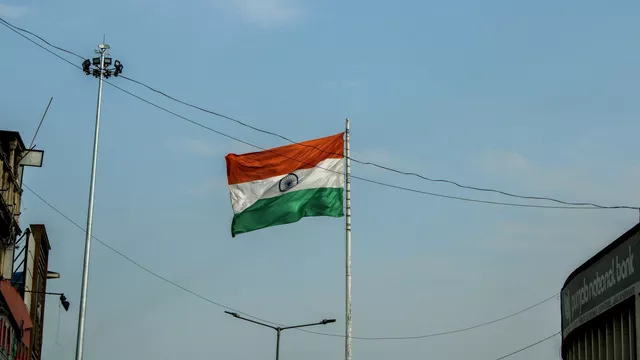
Rupee strives to become a leading currency
India is increasing trade volumes with neighbouring countries, which is leading to a growing demand for its currency. In the future, it may become one of the world's leading payment currencies. This would benefit Russia by reviving trade with India and increasing the importance of our existing reserves of rupees.
Although the Indian currency weakened recently to 82.8 per dollar, it remains near its strongest level since late August 2023. This is due to a significant influx of capital into the economy.
At first glance, the text appears to discuss the speculative stream that flows into Indian government bonds. Foreign investors are increasingly interested in these Treasuries due to their potential inclusion in the FTSE Russell Emerging Markets Bond Index.
Additionally, the rupee's rise can be attributed to India's strong economic performance. In the fourth quarter of 2023, India's GDP grew by an impressive 8.4%, surpassing market expectations of 6.6%. Meanwhile, inflation has remained below the RBI's upper limit of 6% for the sixth consecutive month, standing at 5.09% in February.
Against this backdrop, the Reserve Bank of India (RBI) is expected to maintain its current restrictive interest rates of 6.5%.
There are increasing concerns in the markets that the country's central bank will intervene in foreign exchange if the local currency appreciates excessively. According to the Indian daily Economic Times, importers find the current levels of the rupee attractive and are actively purchasing it, contributing to growth. This is particularly relevant as neighboring countries increase trade volumes with India.
The Indian Commerce and Industry Minister Piyush Goyal stated on March 11 that many large and small economies are ready to start trading with India in rupees. The countries mentioned are Nepal, Bhutan, Bangladesh, Singapore, and Sri Lanka. Additionally, Gulf countries are also included. The speaker noted that more countries are recognizing the advantages of trading in their respective national currencies, and there is a growing trend towards direct transactions between local currencies.
According to him, trading partners can significantly reduce transaction costs by avoiding the need to convert transactions into a third currency. The UAE was one of the first economies to adopt this mechanism, and it has been gaining momentum ever since. India made its first-ever payment for oil in rupees with the UAE.
Trading using the Indian Rupee is also beneficial for importers because the currency remains stable against most international currencies. Furthermore, the rupee trading mechanism has proven advantageous for countries experiencing a shortage of US dollars.
Additionally, similar to China, India has discussed the possibility of the rupee becoming one of the world's leading payment currencies in the future.
Simultaneously, the expert notes that the dollar has depreciated in the global currency market due to anticipated Fed rate cuts. This development is generally favourable for all global currencies. However, it is unlikely that the rupee will strengthen significantly due to the country's negative trade balance, where exports are lower than imports. Although investments are coming into the country, they only serve to stabilize the exchange rate of the national currency and are not sufficient for confident growth of the rupee.
According to Yaroslav Ostrovsky, a specialist in the strategic research department at Total Research, the rupee has been trading against the ruble in the range of 1.05-1.12 rubles per rupee since November 2023. The current quotes stand at 1.11, which is 9% lower than the highs of the summer-autumn period last year. The depreciation of the Indian rupee against the Russian national currency is a result of the suspension of rupee settlements between India and Russia. Russia is insisting on payments in dollars or yuan, which has led to a decrease in Indian imports of oil and coal from Russia.
The Indian rupee has been under pressure recently, causing the USD/INR pair to reach its highest level since the beginning of the year. According to Mikhail Zeltser, a stock market expert at BCS World of Investments, the rate of trading on March 21 was 83.2. However, we do not anticipate a significant increase in the value of the dollar compared to the Indian national currency due to several factors. Last autumn, the Central Bank of India decided to strictly control the exchange rate due to the rampant devaluation of the national currency. Funding rates have been increased, and reserves have been put in place to contain the weakening of the rupee. The regulator is unlikely to let the bar fall below 83.5.
Yaroslav Ostrovsky points out that the weak convertibility of the rupee to major world currencies caused a serious trade imbalance, resulting in Russia accumulating more than 35 billion rupees. The dynamics of the rupee/ruble exchange rate suggest that the rupee will strengthen to 1.16 by the beginning of the summer season, with subsequent quotes correction in the range of 0.93-0.95 rubles per rupee.
